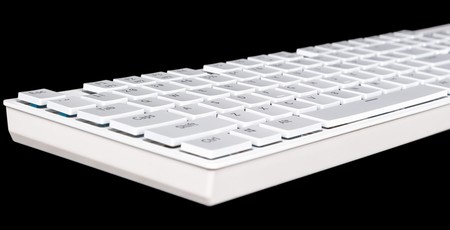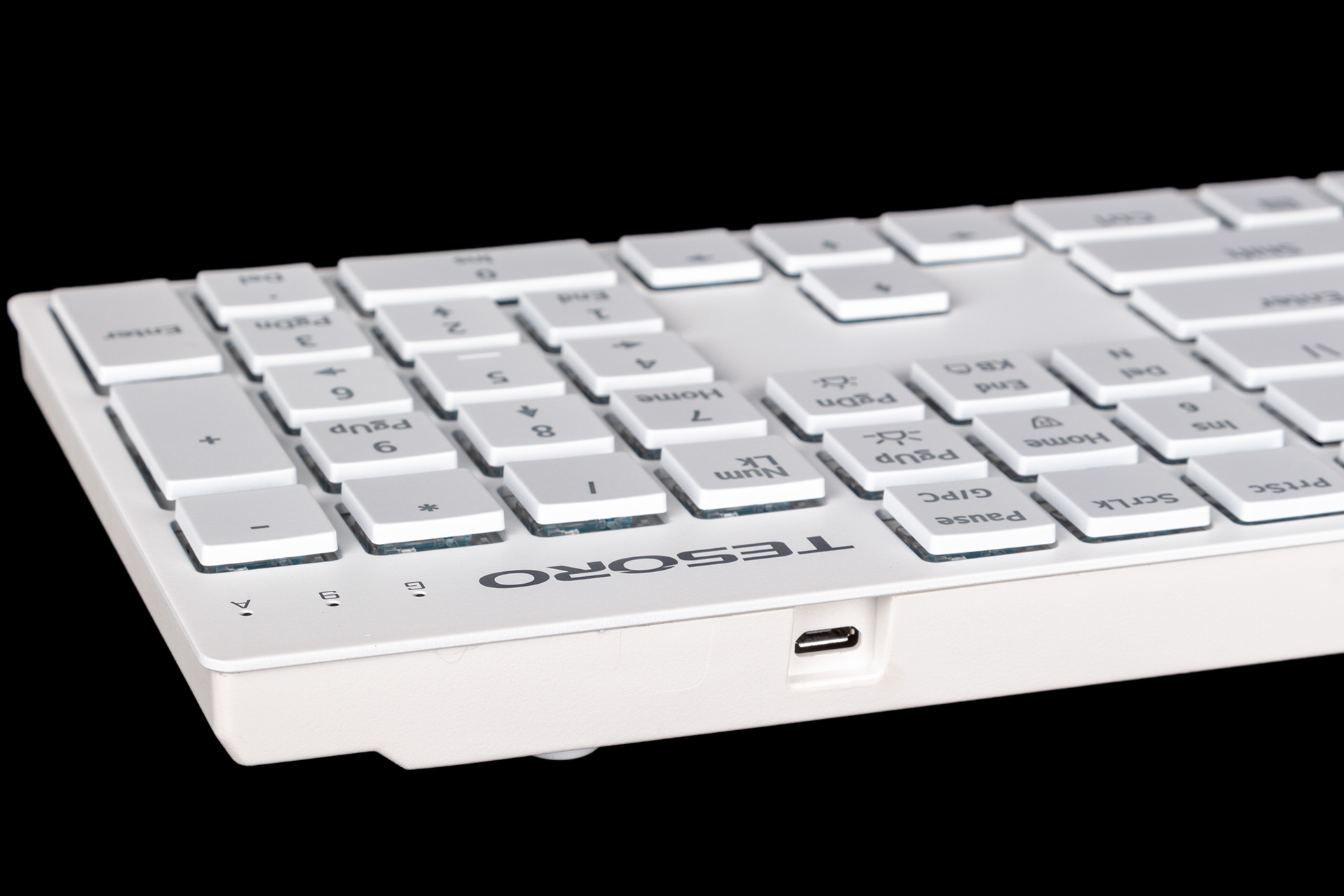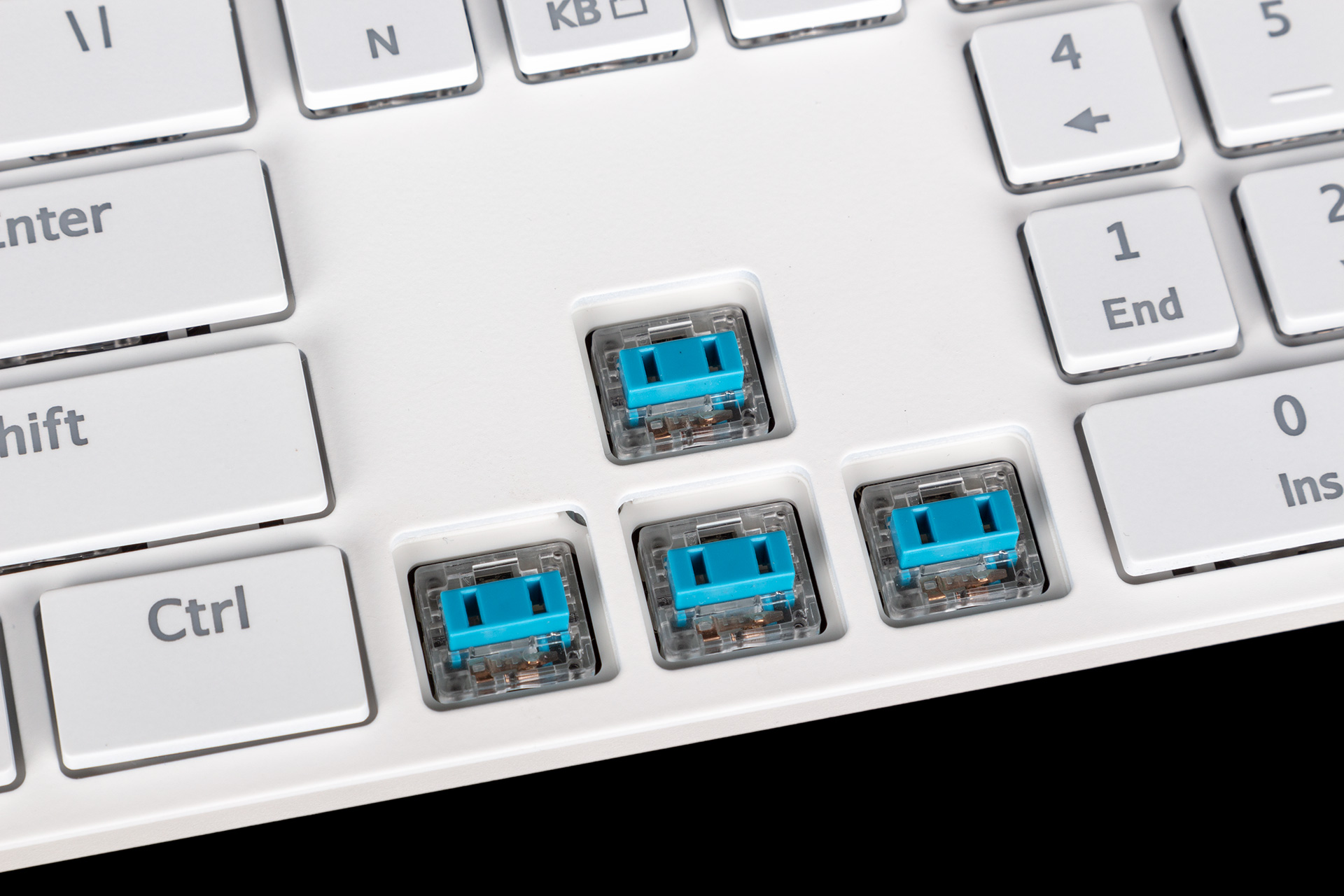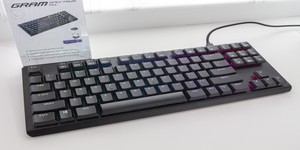
Manufacturer: Tesoro
UK price (as reviewed): N/A
US price (as reviewed): $119.99 (exc. tax)
As mechanical keyboards have developed over the years into something marketed heavily towards gamers, RGB LEDs have become commonplace and a more recent trend is switches that actuate faster than traditional designs, such as we saw recently with the Roccat Vulcan 120 Aimo. One area that has remained relatively under-explored, though, is reducing the z-height of switches and mechanical keyboards themselves, though this too is changing. The Kailh-made SteelSeries QS1 switch was used – successfully, I thought – in the Apex M800 keyboard but never seen again, and numerous other switches are starting to limit the overall travel, but specific low-profile mechanical keyboards are few and far between. In fairness, desk footprint is much more likely to be a concern than keyboard height for most, but if you do want a sleek/minimalist mechanical keyboard or are just very space-conscious, you might be struggling with current offerings. That’s where the $120 Tesoro Gram XS comes in.

You may remember the Gram XS from a recent video in our modding section, but today we’re bringing you the full review of the keyboard as it comes by default. You can buy it in either black or white and with a choice of linear Red or clicky Blue switches.

Removing it from the box, it certainly lives up to its low-profile credentials with a height of just 24mm. The steel top-plate does enough to keep the 800g board feeling reasonably rigid, and you get a generous helping of rubber on the plastic underside, but I was disappointed to note the lack of flick-out feet, as I like a sharper angle than what’s offered here, even with the built-in elevation. Perhaps I’m not the target market for a low-profile keyboard, but it’s pretty standard to have the option for this.

The only accessory in the box is a braided 1.8m USB cable, which attaches to the board via an off-centre micro-USB connection and matches the colour of the keyboard. Sadly, I noted on my sample a slightly flakey connection on the keyboard side; it disconnected a little too easily when the keyboard or cable was nudged.
The chiclet-style keycaps are made from ABS plastic with primary symbols etched onto the top half to align with the LED in the switch and secondary symbols etched into either the bottom or top depending on the key. I personally have no issue with the font size or style Tesoro has chosen.

Tesoro has worked with TTC in making its Ultra-Slim Mechanical Switch. Both the Blue and Red varieties have 3mm of total travel, and the actuation point is a mere 1.1mm. The actuation force, meanwhile, is 40cN for the Blue switch on our sample, which is lower than a Cherry MX Blue by 10cN. The switches themselves have a rectangular plunger with two holes into which the keycap fits and a clear plastic housing through which light from the RGB LED is dispersed. The clicky mechanism means that it’s a fairly noisy keyboard to type on, especially as you’re likely to bottom out a lot too.
Switch choice is largely a personal preference, but I have to say I didn’t enjoy writing or gaming on the Gram XS at first, even though I’ve used and enjoyed many keyboards with Cherry MX Blue or similar switches. For starters, there seems to be an inconsistency from one switch to another, both in terms of when they actuate and how much pressure is required to do so. It took longer to get used to than most keyboards, which is rarely a good sign, and I found myself making mistakes more often than usual when writing. A closer examination of the switches through pressing them very slowly revealed that you can sometimes click the mechanism without actuating the switch and other times successfully actuate the switch without getting the click. With a normal typing force, this was never the case, but it does suggest the underlying tolerances may be too loose, and ultimately I found the click/reset mechanisms to be a hindrance and a distraction rather a useful bit of feedback. One final point is that longer buttons like Shift, 0 on the numpad, and especially the spacebar are quite badly stabilised; if you tend to hit the spacebar off-centre with your thumbs like me then you will very likely pick up on this.

As with almost any keyboard, you do adjust to the switch action after a little while, and in time I was typing at roughly my normal pace without having to look at the keyboard. At this point, the low-profile design starts to become more beneficial; there’s no “step” between keys for your fingers to make since the keycap surfaces are all on a roughly even plane. It actually starts to feel like less effort to type as a result. However, the occasional unexpected hitch was still there, so I don’t think I’d swap to this keyboard or these switches in a hurry. I would be keen to try the linear switches on this keyboard, if only because there’s a lot less that can go wrong, but alas that was not the switch type I was sent.
A bottom-row FN key is used to trigger certain custom commands. The Tesoro Gram XS has four onboard profiles: three custom ones accessed with FN and F1, F2, and F3, all of which are considered Gaming Modes where the Windows key is disabled and in which you can customise key functions, and a single PC Mode that acts as a default profile not open to customisation – a sensible move. FN and Pause switches between PC and Gaming Modes, with the latter simply reverting to whichever of the three you last had active. Note that the scroll lock indicator light has been swapped for a Game Mode indicator LED here.

Other FN-based abilities include a switch between n-key rollover and six-key rollover, media and volume controls, backlight brightness control (four settings plus off), the ability to lock all keys, and finally an Instant Record button for on-the-fly macro recording.
A 32-bit Arm Cortex processor is paired with 512KB of onboard memory for storing and executing custom settings, and while you can program custom functions using the keyboard and the Instant Record button, you’ll need the new Tesoro 360 software to maximise your options.

MSI MPG Velox 100R Chassis Review
October 14 2021 | 15:04







Want to comment? Please log in.